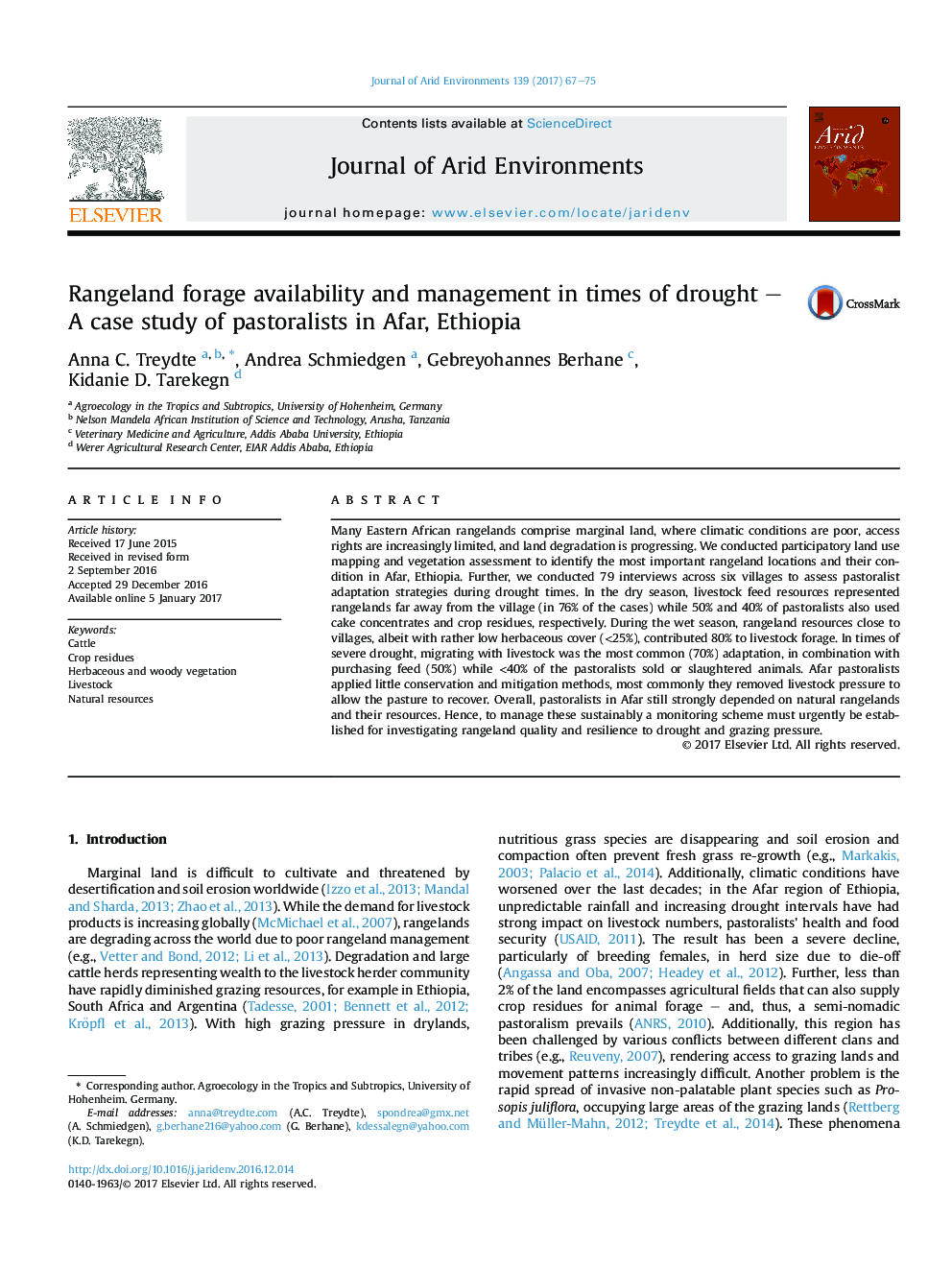| Article ID | Journal | Published Year | Pages | File Type |
|---|---|---|---|---|
| 5744350 | Journal of Arid Environments | 2017 | 9 Pages |
â¢Afar pastoralists mainly depend on natural rangeland resources for their livestock.â¢Supplemental feeds (e.g., crop residues) were not frequently used.â¢Average herbaceous cover of rangelands was <25%.â¢In times of severe drought, migrating with livestock was most common.â¢Afar pastoralists applied little rangeland conservation and mitigation efforts.
Many Eastern African rangelands comprise marginal land, where climatic conditions are poor, access rights are increasingly limited, and land degradation is progressing. We conducted participatory land use mapping and vegetation assessment to identify the most important rangeland locations and their condition in Afar, Ethiopia. Further, we conducted 79 interviews across six villages to assess pastoralist adaptation strategies during drought times. In the dry season, livestock feed resources represented rangelands far away from the village (in 76% of the cases) while 50% and 40% of pastoralists also used cake concentrates and crop residues, respectively. During the wet season, rangeland resources close to villages, albeit with rather low herbaceous cover (<25%), contributed 80% to livestock forage. In times of severe drought, migrating with livestock was the most common (70%) adaptation, in combination with purchasing feed (50%) while <40% of the pastoralists sold or slaughtered animals. Afar pastoralists applied little conservation and mitigation methods, most commonly they removed livestock pressure to allow the pasture to recover. Overall, pastoralists in Afar still strongly depended on natural rangelands and their resources. Hence, to manage these sustainably a monitoring scheme must urgently be established for investigating rangeland quality and resilience to drought and grazing pressure.
Graphical abstractDownload high-res image (243KB)Download full-size image
